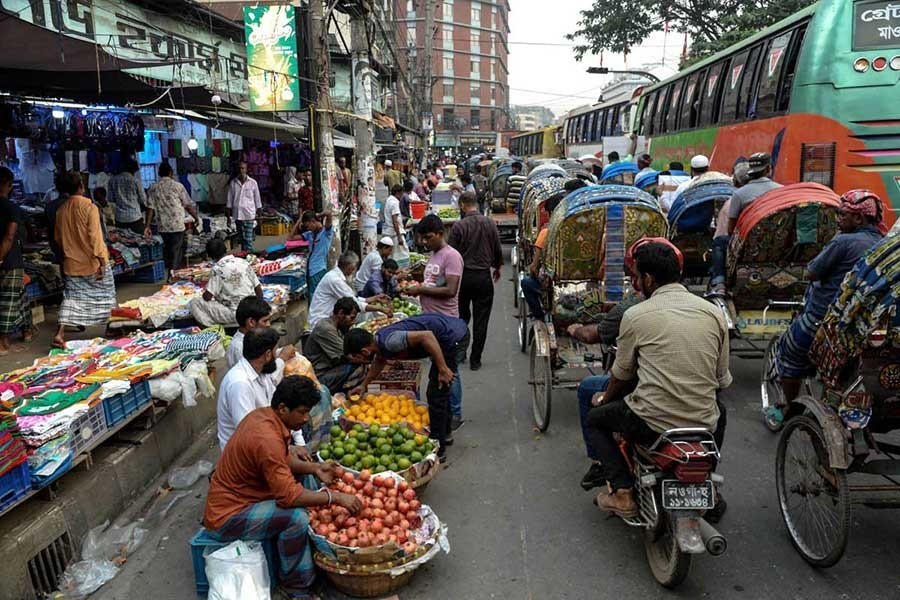In spite of living in this traffic gridlock-plagued Dhaka, few people have noticed how a similar menace keeps growing in the city. This could be termed neighbourhood traffic jam. This is no extraordinary urban blight, as it originates in a main road, and later spread throughout the nearby lanes and by-lanes. It could better be called the impact of a domino effect of a bigger jam created in the broad street nearby. Taking a short-cut into the smaller roads to avoid a big snarl-up, and reach destinations smoothly has lately become a much-followed practice in this city. The most debilitating part of the neighbourhood jam is the veritable collapse of the traffic network in areas within the city. People in these localities have their own traffic movement. They have their mini gridlocks. When a large traffic descends on the smaller roads and alleys to reach a broader road on the other side, the areas in the middle part have to bear the brunt. In Dhaka, there are several such areas which have been made to become the victims of shortcuts. Apart from the different types of cars and carriers, it is the innumerable rickshaws and non-motorised vehicles which are found swarming the narrow streets.
In the past, there were only a handful of such neighbourhoods in Dhaka. Those were quiet and sylvan with one or two roads. The population of those residential areas was much lower than it is today. With the fast rise in urbanisation complete with new roads and apartments and other constructions, the earlier homeliness began vanishing from those areas. The bigger neighbourhoods assumed the characters of urban pockets. Today the problem lies with the unplanned movement of traffic in areas too small to manage it. A basic problem which has lately cropped up is the astronomical rise in the areas' population, leading to the tendency to build apartments and condominiums in every possible space possible. The few cars earlier driven by a neighbourhood's relatively rich people have been swamped by those of the new comers. The increased numbers of additional cars have already started posing problem in plying the once neighbourhood roads. The entries and exits of hundreds of additional vehicles through these narrow roads every day heavily affect these areas.
The local people at rush hours on days find themselves at their tether's end. The sounds of vehicle movements and honking, the quarrel between the rickshaw-pullers and the drivers or owners etc creates an unbearable situation at places of the area. The traffic police are found on occasions at road corners. The presence of the law enforcers considerably mitigates the sufferings of the road users in the neighbourhoods. Unfortunately, their presence is seen once in a blue moon. Unplanned opening of large shops, kitchen markets etc squeezes the roads already filled with varied types of vehicles.
Many might suggest blocking the roads or checking the cars' identity on the neighbourhood streets, especially at the entries. Others believe this will not work. It's because many of the car owners live in the middle of these areas. So do many rickshaw travellers. Moreover, it might amount to creating hurdles for free movement. This question will arise if the roads or lanes in question connect two larger roads at the two ends. This is a dilemma. A solution could come from allowing vehicles to move in one direction for some time followed by a similar movement from the opposite direction for the same period. A pragmatic solution to the problem of moving through the lanes of neighbourhood areas has long been overdue. People in the metropolitan Dhaka are enduring it in excruciating silence.


